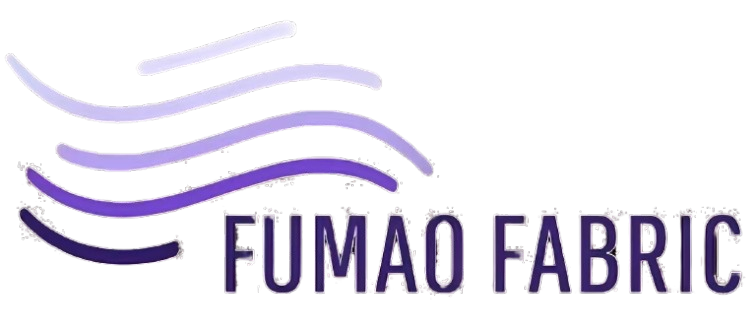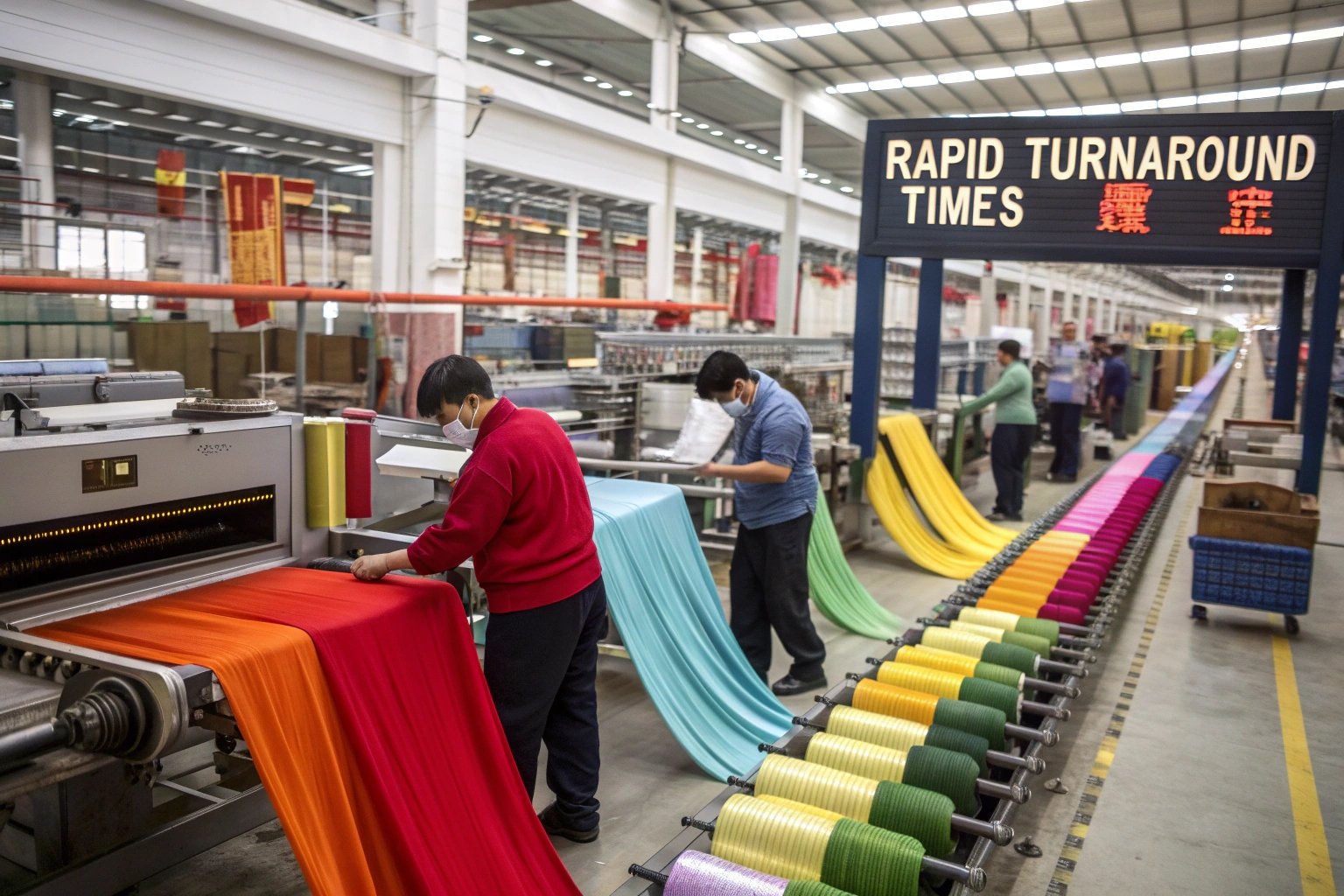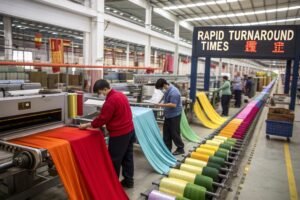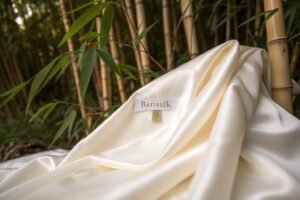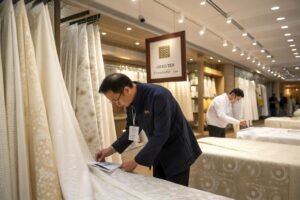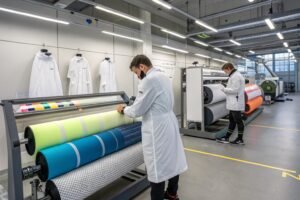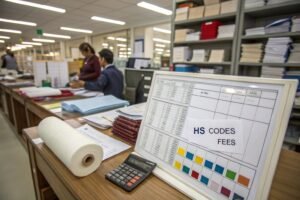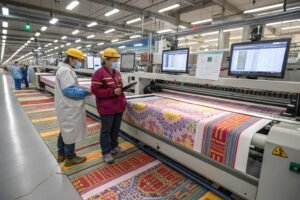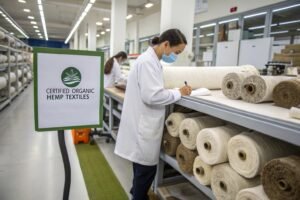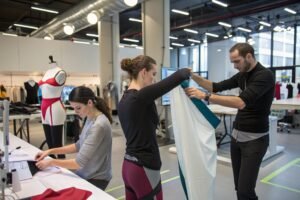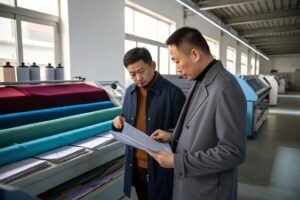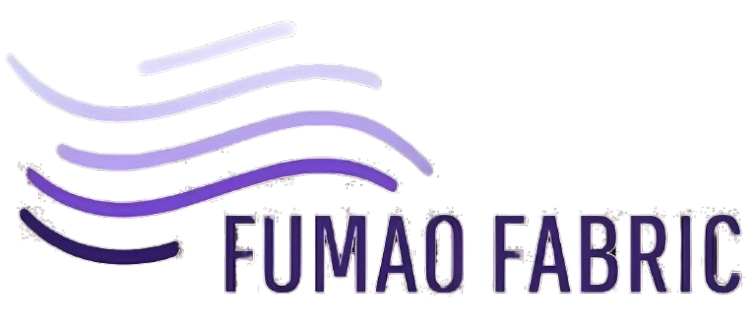Time is everything in fabric sourcing. Whether you're a fashion brand chasing tight launch cycles or a supplier like me helping buyers like Ron meet seasonal demand, delays in dyeing can halt the whole supply chain. But here’s the truth: when dyeing is local and integrated, everything moves faster.
Partnering with local dyeing factories eliminates transport lag, speeds up approvals, and unlocks true 72-hour turnaround potential.
In Keqiao, where Fumao operates, our close ties with nearby dyeing houses allow us to skip the typical 5–7 day shipment delay and instead achieve same-day color lab dips, real-time defect checks, and better collaboration. Let's dive into how this local synergy accelerates every meter of fabric you order.
Speed isn't just about machines—it’s about proximity, trust, and partnership.
What Is the Typical Delay When Dyeing Is Off-Site?
Even when mills weave fast, dyeing bottlenecks can kill your timeline.
Off-site dyeing adds 3–7 days to your production cycle due to transport, queueing, and communication lag.
You weave the fabric, book transport, wait in the dye queue, and then hope no defects show up. If they do, it goes back for rework. For importers working on tight retail schedules or e-commerce drops, this delay creates lost revenue and planning headaches.
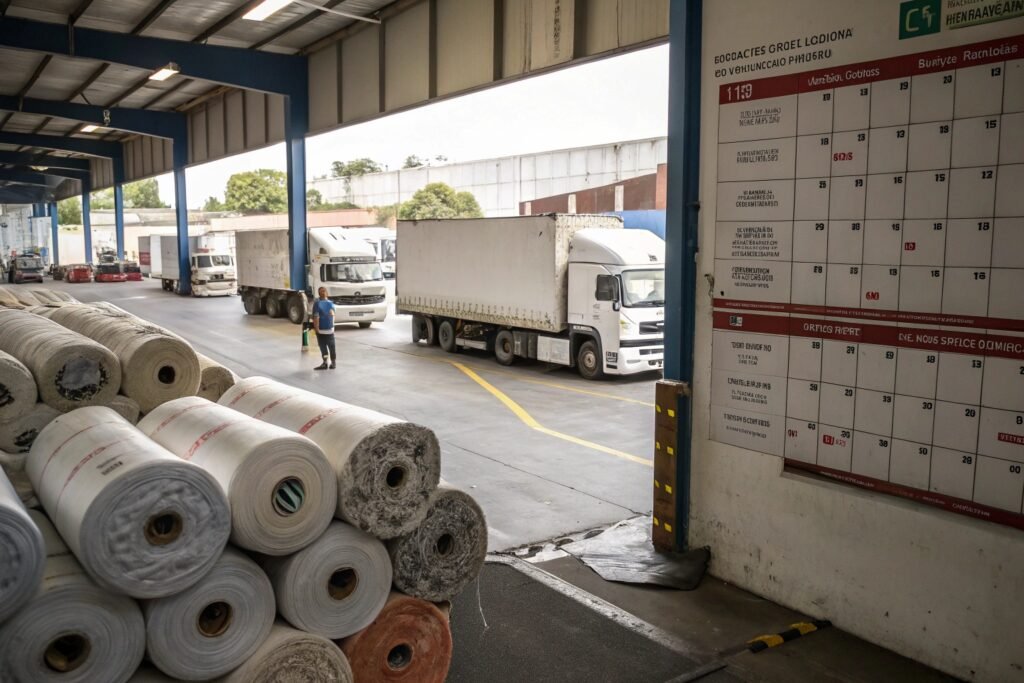
How Long Does Transport Alone Take?
Typically, moving fabric to an off-site dyeing mill, even just 100km away, eats up 1–2 days when you include:
- Booking the truck
- Loading/unloading
- Queue at dyeing facility
Even worse during peak season (e.g., pre-Canton Fair or Black Friday).
What Happens If the Color Isn’t Approved?
Rejections double the delay. If lab dips or bulk shades aren’t approved, you redo them—adding 3–5 days per iteration. Miscommunication between factories worsens the cycle.
How Does Local Dyeing Improve Lab Dip Turnaround?
Colors drive fashion. But matching them fast is the real edge.
With local dyeing, lab dips are completed in 12–24 hours with real-time visual approvals.
At Fumao, we walk the sample roll from our weaving floor directly to the dye partner two blocks away. Our technicians sit in on dye testing and confirm tone under D65 light immediately. No waiting, no truck, no lost samples.
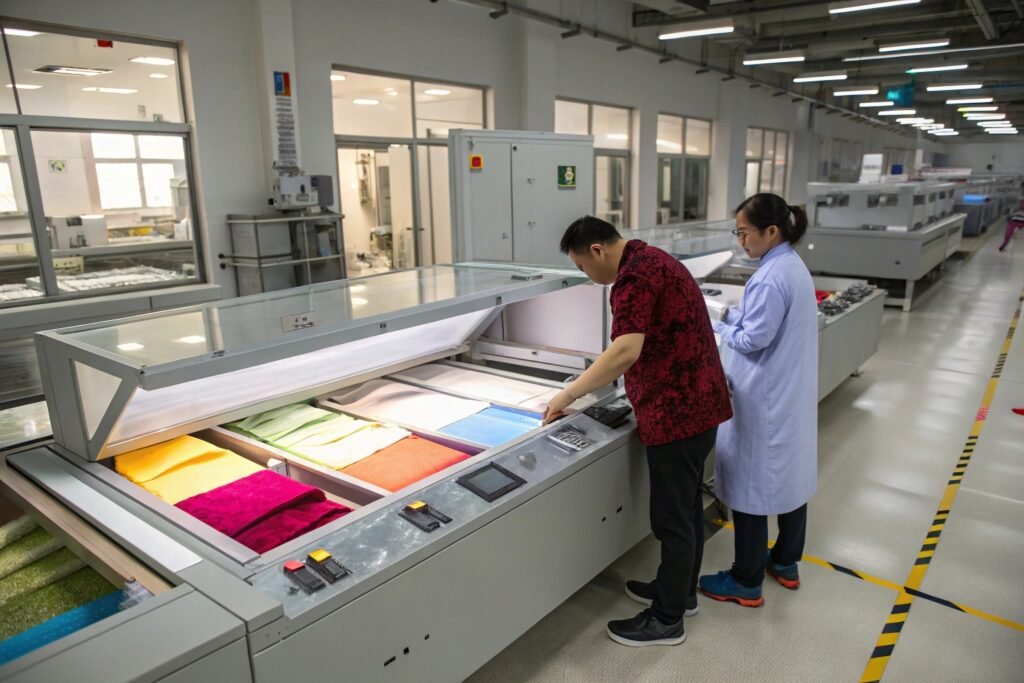
What If a Shade Misses the Target?
When the dyeing lab is local, we adjust on the spot. No 3-day wait for a new sample to be shipped. We can change recipe parameters—temperature, dye load, PH—on the same day.
How Many Lab Dips Are Normal?
Most clients approve on the first or second dip. But even with 3 iterations, we can finish them all in under 3 days—compared to over a week with remote partners.
How Does Local Partnership Reduce Bulk Dyeing Errors?
Once you hit bulk, mistakes get expensive. Fixing them late is worse.
Local dyeing allows shared QC, inline shade tracking, and batch corrections without stopping the order.
We do inline color checks during dyeing—not after. If a color shift begins, we stop the run immediately. Our dye house partners send live updates to our central QC office, including spectrophotometer reports and shade B/C/D grading charts.
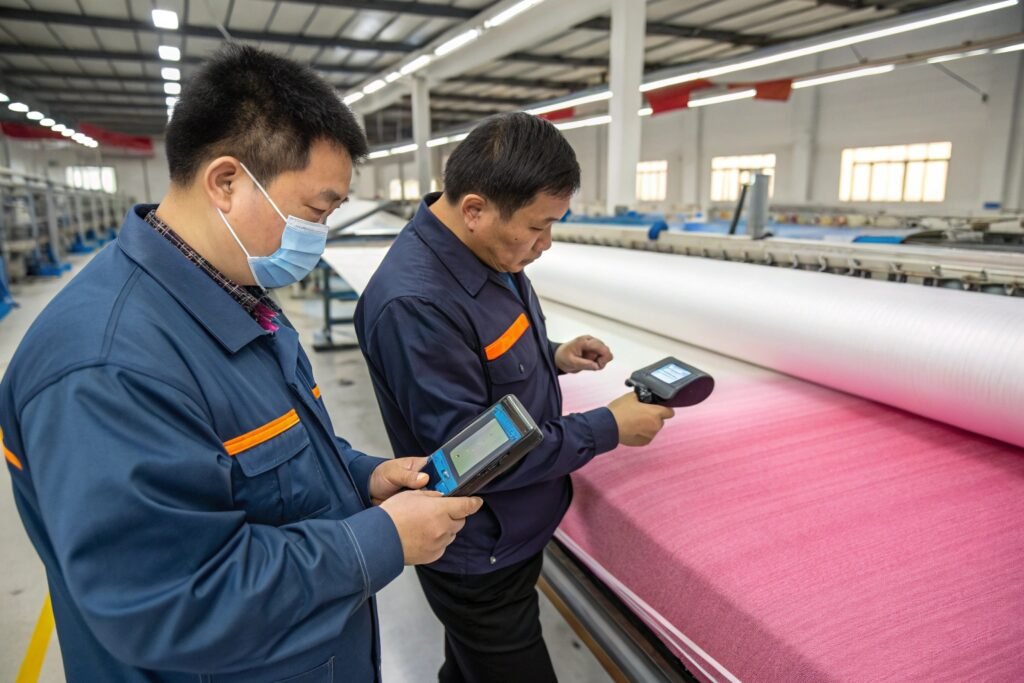
What Are Common Bulk Dyeing Issues?
- Shade banding across the width
- Left-right side shade variation
- Roller marks or crease dyeing
- Off-spec lightness/darkness
With close proximity, we solve these in 2 hours—not 2 days.
How Are Reports Tracked?
Each roll is QR-tagged. Our system logs fabric batch ID, dye time, machine number, shade standard, and post-dye test results. Buyers can scan and verify from anywhere.
Can Local Dyeing Help with Custom or Seasonal Colors?
Fashion moves fast. Waiting weeks for a “dusty lavender” or “moss gray” just isn’t realistic.
Local dyeing allows faster seasonal trend matching, customized recipes, and pilot yardage tests—all within days.
We track global Pantone trends and client mood boards. Then we walk next door and start testing. For spring drops, we’ve developed 12–20 shades in a single week—something impossible with disconnected vendors.
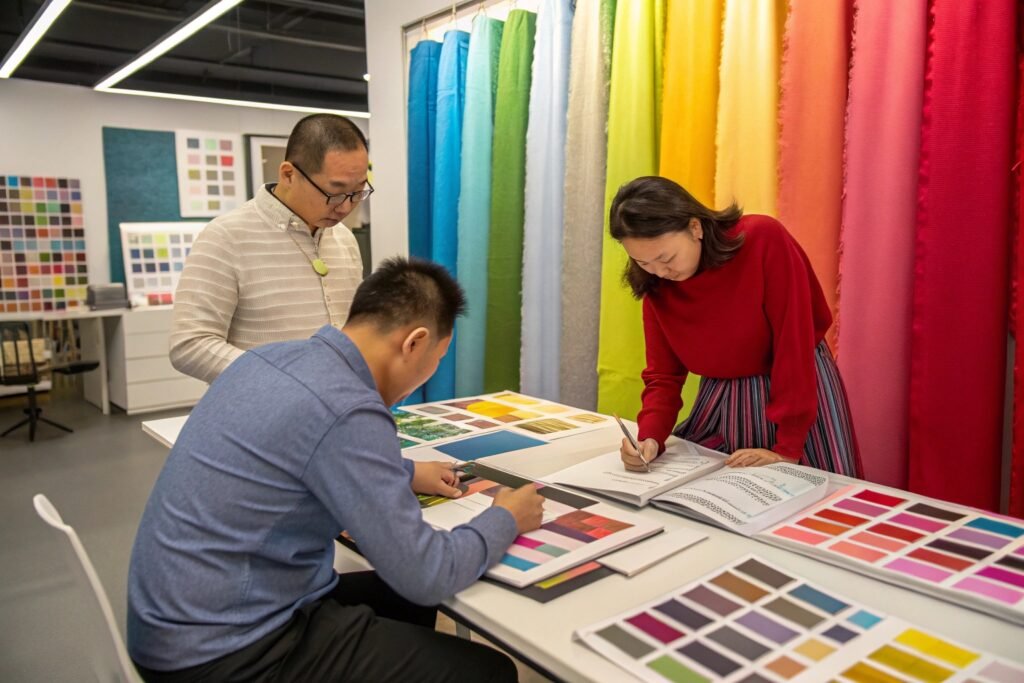
Do We Use Pantone or Custom Color Matching?
Both. We work with Pantone TCX chips, but also support photo reference or garment back-matching. Dye technicians replicate shades using spectrometer calibration and iterative dips.
Can Pilot Runs Be Done on Demand?
Yes. Many clients request 50–100m runs before confirming 3,000m+ orders. Local dyeing enables same-day switchovers and multi-shade trials with no setup fee.
Conclusion
When your fabric dyeing is done nearby—everything moves faster. Lab dips arrive in hours, shade corrections happen on the spot, and you get control instead of chaos. At Fumao, our local dyeing partnerships are not just convenient—they’re strategic. For brands that need fast cycles, accurate shades, and zero compromise on quality, this setup delivers real competitive advantage. Fabric moves faster when dyeing is just around the corner.
